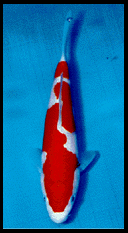Koi Ponds:
What is a Koi Pond?
A Koi pond is an enclosed, recirculating, freshwater
system for keeping Koi (Japanese fancy carp).
 This subject area has been the hardest to describe.
I am not trying to offend anyone. But, before we go
any further, it is important to note that when KOI.NET
refers to a pond it is considering a "pond for
Koi." Please do not confuse a Koi pond referred to
here with a "natural garden pond," a waterlily
pond, or a small water accent in the garden. There
is nothing wrong with any of the these. It just that
here, the purpose of a pond is to provide a healthy
home for Koi. Koi can live in the others, but not in
the numbers that necessitate a Koi pond.
This subject area has been the hardest to describe.
I am not trying to offend anyone. But, before we go
any further, it is important to note that when KOI.NET
refers to a pond it is considering a "pond for
Koi." Please do not confuse a Koi pond referred to
here with a "natural garden pond," a waterlily
pond, or a small water accent in the garden. There
is nothing wrong with any of the these. It just that
here, the purpose of a pond is to provide a healthy
home for Koi. Koi can live in the others, but not in
the numbers that necessitate a Koi pond.
A Koi pond should serve two main functions;
- One is to provide a healthy home for your Koi.
- The other is to provide "clear-water"
so that you, the owner, can enjoy your Koi.
 Neither of the above is dependent
on the other. You can have healthy and happy Koi in
a "pea-soup" green pond, or you can have
diseased and dying Koi in green water. Having "crystal-clear"
water is not an indication of a healthy pond. Water
is an excellent solvent. It is possible to have unhealthy,
toxic, crystal-clear water. In fact, you might have
pond water so unhealthy that even algae would not grow
in it!
Neither of the above is dependent
on the other. You can have healthy and happy Koi in
a "pea-soup" green pond, or you can have
diseased and dying Koi in green water. Having "crystal-clear"
water is not an indication of a healthy pond. Water
is an excellent solvent. It is possible to have unhealthy,
toxic, crystal-clear water. In fact, you might have
pond water so unhealthy that even algae would not grow
in it!
In addition, most Koi ponds are an attractive addition
to the garden!
 The way we achieve the above two functions is mainly
through "biological filtration" as opposed
to using "mechanical" filtration and/or "chemicals."
The way we achieve the above two functions is mainly
through "biological filtration" as opposed
to using "mechanical" filtration and/or "chemicals."
Swimming Pool Filters.
 One of the reasons swimming pool filter systems do not
work very well on Koi ponds is that they are designed
for mechanical and chemical filtration of water. Swimming
pool filter systems rely on a pump that is operated
for a set time each day. Pumps used for biological
filters are required to run 24 hours a day. Most people
who purchase swimming pool pumps for Koi ponds are
"shocked" at the increase in their monthly
electrical bills.
One of the reasons swimming pool filter systems do not
work very well on Koi ponds is that they are designed
for mechanical and chemical filtration of water. Swimming
pool filter systems rely on a pump that is operated
for a set time each day. Pumps used for biological
filters are required to run 24 hours a day. Most people
who purchase swimming pool pumps for Koi ponds are
"shocked" at the increase in their monthly
electrical bills.
Small Commercially Available Pond filters.
 Let me warn you about some commercial pond filters
available through nurseries, water garden supply, and
internet catalog sales. The manufacturer, like most companies,
are in business because there is a demand for these product .
Some product descriptions, as advertised, may seem
like the solution. But seriously, who would you rather
trust? The claim of a manufacturer or somebody who lives
near you with a successful fish pond. KOI.NET feels
that your "best" source for information on
proper filtration is from a person, in your area, who
has successfully kept fish healthy in their own pond
for several years. The best place to locate people
like that is through a Koi club in your area.
Let me warn you about some commercial pond filters
available through nurseries, water garden supply, and
internet catalog sales. The manufacturer, like most companies,
are in business because there is a demand for these product .
Some product descriptions, as advertised, may seem
like the solution. But seriously, who would you rather
trust? The claim of a manufacturer or somebody who lives
near you with a successful fish pond. KOI.NET feels
that your "best" source for information on
proper filtration is from a person, in your area, who
has successfully kept fish healthy in their own pond
for several years. The best place to locate people
like that is through a Koi club in your area.
Commercially Available Koi Pond Bead filters.
 Since the introduction of the BubbleBead filter back in 1996, other commercially made bead filters for Koi ponds
have become very popular. Originally, some of these new bead filters were nothing more than swimming pool sand filters
with plastic beads for media. Over the years there has been some design advancements by a couple of companies.
Most notably is the replacement of plastic beads with small plastic tubular media with increased biological surface area
that is less prone to clumping problems. Talking to many owners of these filters, like the original BubbleBead filter,
an ultra-violet (U.V.) sterilizer is needed to control green water.
Since the introduction of the BubbleBead filter back in 1996, other commercially made bead filters for Koi ponds
have become very popular. Originally, some of these new bead filters were nothing more than swimming pool sand filters
with plastic beads for media. Over the years there has been some design advancements by a couple of companies.
Most notably is the replacement of plastic beads with small plastic tubular media with increased biological surface area
that is less prone to clumping problems. Talking to many owners of these filters, like the original BubbleBead filter,
an ultra-violet (U.V.) sterilizer is needed to control green water.
 There are other types of commercial Koi pond filters that are not
enclosed media pressure filters like bead filters. Most notable is the Nexus Eazy moving bed filter with its
Kaldnes K1 media (advance filtration design and very expensive) and the Bakki Shower filter with
Bacteria House ceramic media (also very expensive).
There are other types of commercial Koi pond filters that are not
enclosed media pressure filters like bead filters. Most notable is the Nexus Eazy moving bed filter with its
Kaldnes K1 media (advance filtration design and very expensive) and the Bakki Shower filter with
Bacteria House ceramic media (also very expensive).
Koi Clubs.
 The advantage of Koi clubs is that most clubs provide
you with the opportunity to visit several private Koi
ponds. By visiting and asking questions, you should
be exposed to several ways to achieve biological filtration.
There is not just "one way" to achieve a
healthy pond. Hopefully by visiting several ponds you
can "borrow" ideas and avoid the mistakes
made by others.
The advantage of Koi clubs is that most clubs provide
you with the opportunity to visit several private Koi
ponds. By visiting and asking questions, you should
be exposed to several ways to achieve biological filtration.
There is not just "one way" to achieve a
healthy pond. Hopefully by visiting several ponds you
can "borrow" ideas and avoid the mistakes
made by others.
Design Considerations for a Koi Pond.
- 500 gallons or larger (1500 gallons or larger would be better). "The bigger, the better."
- 24 inches or deeper (3 feet or deeper is better). Deeper is better. Does not
take up any more space or proportionally more filtration.
- Straight or near vertical walls. Protection from predators
and more pond volume.
- One or more bottom drains.
- A bottom that slopes towards the drain and away from
water falls or incoming water.
- Some form of surface skimmer. The pool and spa skimmers
with a "weir" work best.
- A biological filtration system.
 The rest of this page focuses mainly on filtration related
topics. Below are pictures of a variety of ponds that
represent the above design considerations. Please check back, because this
area will always be "under construction"
with new pictures added as they become available.
The rest of this page focuses mainly on filtration related
topics. Below are pictures of a variety of ponds that
represent the above design considerations. Please check back, because this
area will always be "under construction"
with new pictures added as they become available.
Introduction to Filtration:
 Most ponds have been built as part of the general landscaping. Later on, some goldfish were
added to give the pond some life. Then those beautiful Koi were discovered. But now suddenly, when
there is brightly colored fish to look at, green water is a major problem.
Most ponds have been built as part of the general landscaping. Later on, some goldfish were
added to give the pond some life. Then those beautiful Koi were discovered. But now suddenly, when
there is brightly colored fish to look at, green water is a major problem.
 What is needed is a biological filter. This will take the wastes from the fish and process them
naturally to produce clean water. This is done through microorganisms that develop in the
biological filter. Mechanical filtration is also important. The less solids that go into the biological filter,
the better it is for the microorganisms to concentrate on the dissolved wastes like ammonia.
What is needed is a biological filter. This will take the wastes from the fish and process them
naturally to produce clean water. This is done through microorganisms that develop in the
biological filter. Mechanical filtration is also important. The less solids that go into the biological filter,
the better it is for the microorganisms to concentrate on the dissolved wastes like ammonia.
 As stated above, a swimming pool filter will not work on a fish pond. The reason is, in a swimming pool you use
chlorine, and the pool water has very little solids and ammonia (fish wastes) in it. A swimming
pool filter used on a fish pond will require frequent back-flushing. Also a high powered pump will
be required to push the water through the filter. Remember, you will need to run the pump 24 hours a day,
and this will show up on your electric bill.
As stated above, a swimming pool filter will not work on a fish pond. The reason is, in a swimming pool you use
chlorine, and the pool water has very little solids and ammonia (fish wastes) in it. A swimming
pool filter used on a fish pond will require frequent back-flushing. Also a high powered pump will
be required to push the water through the filter. Remember, you will need to run the pump 24 hours a day,
and this will show up on your electric bill.
Koi Pond Filtration:
 Koi pond biological filters can be built as either an "up-flow" or a "down-flow." The "out-of-pond"
designs are a little easier to maintain and can be added to an existing pond. A good reference on
filtration is The Tetra Encyclopedia of Koi.
Koi pond biological filters can be built as either an "up-flow" or a "down-flow." The "out-of-pond"
designs are a little easier to maintain and can be added to an existing pond. A good reference on
filtration is The Tetra Encyclopedia of Koi.
Pumps:
 |
The Sequence 1000 produces a maximum flow rate with minimal electrical consumption
when compared to swimming pool and cheaper submersible pumps.
For more information and a distributor near you, call:
Multi-Duti Manufacturing, Inc.
e-mail: Sales@mdminc.com
1-800-447-8342
Be sure to mention you saw it on KOI.NET! |
Another good, efficient, "swimming pool" style of pump is the
Sta-Rite LT 1/6 HP, 3.7 amps, 2400 gph.
For a distributor near you: Sta-Rite Pool/Spa Group
1-800-752-0183 (North America)
414-728-5551 (International) |
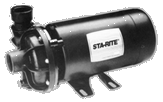 |
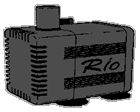 |
Rio Pumps are high-flow, very efficient, submersible
(no oil) magnetic drive pumps. Very affordable for small ponds.
 Higher Performance RIO pumps. Higher Performance RIO pumps.
For a distributor near you, call:
Westcoast Aquatics
1-805-499-7866 Be sure to mention KOI.NET! |
| A new energy efficient swimming pool style of pump is the
Wave Series. Electrical consumption starts at a low 2.1 Amps.
For more information and a distributor near you, call: W. Lim Corporation
1-626-448-6100
e-mail: WLimCorp@WLimProducts.com |
 |
Return to page TOP
Advanced Topics:
Web'ster: (Richard Renshaw),
rrenshaw at playkoi dot com
Copyright © 1996-2013, Richard L. Renshaw, Revised January 30, 2013
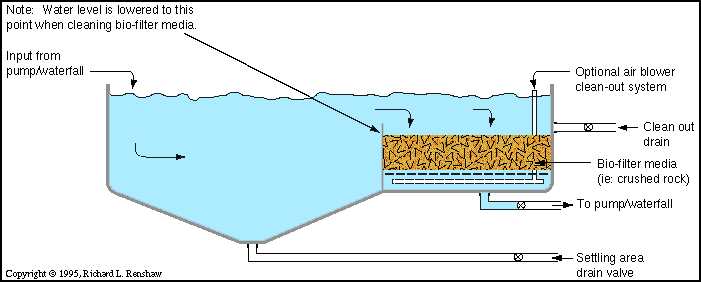
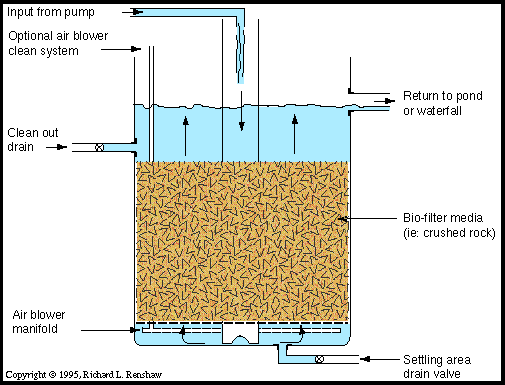


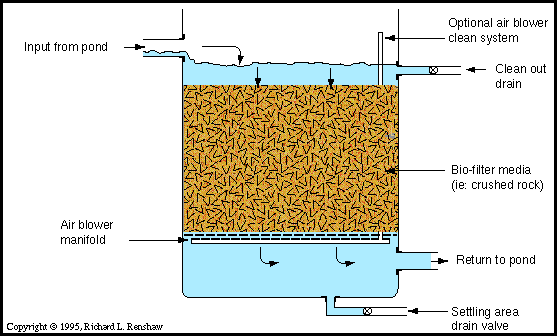
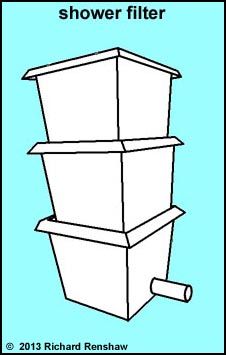

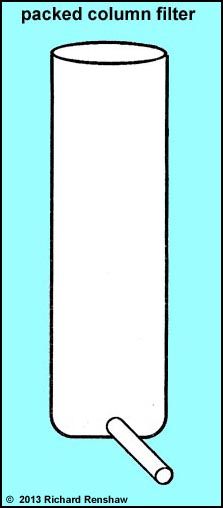

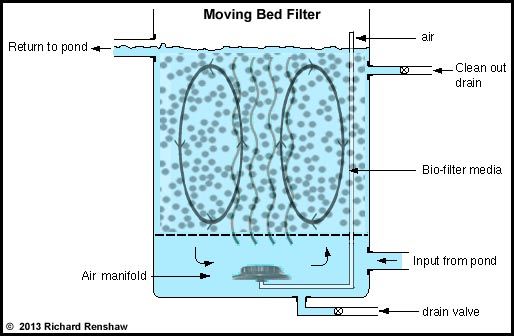
 Koi Ponds:
Koi Ponds:
 Introduction to Filtration:
Introduction to Filtration:
 Koi Pond Filtration:
Koi Pond Filtration:
 Pumps:
Pumps:
 Advanced Topics:
Advanced Topics:
![]() This subject area has been the hardest to describe.
I am not trying to offend anyone. But, before we go
any further, it is important to note that when KOI.NET
refers to a pond it is considering a "pond for
Koi." Please do not confuse a Koi pond referred to
here with a "natural garden pond," a waterlily
pond, or a small water accent in the garden. There
is nothing wrong with any of the these. It just that
here, the purpose of a pond is to provide a healthy
home for Koi. Koi can live in the others, but not in
the numbers that necessitate a Koi pond.
This subject area has been the hardest to describe.
I am not trying to offend anyone. But, before we go
any further, it is important to note that when KOI.NET
refers to a pond it is considering a "pond for
Koi." Please do not confuse a Koi pond referred to
here with a "natural garden pond," a waterlily
pond, or a small water accent in the garden. There
is nothing wrong with any of the these. It just that
here, the purpose of a pond is to provide a healthy
home for Koi. Koi can live in the others, but not in
the numbers that necessitate a Koi pond.![]() Neither of the above is dependent
on the other. You can have healthy and happy Koi in
a "pea-soup" green pond, or you can have
diseased and dying Koi in green water. Having "crystal-clear"
water is not an indication of a healthy pond. Water
is an excellent solvent. It is possible to have unhealthy,
toxic, crystal-clear water. In fact, you might have
pond water so unhealthy that even algae would not grow
in it!
Neither of the above is dependent
on the other. You can have healthy and happy Koi in
a "pea-soup" green pond, or you can have
diseased and dying Koi in green water. Having "crystal-clear"
water is not an indication of a healthy pond. Water
is an excellent solvent. It is possible to have unhealthy,
toxic, crystal-clear water. In fact, you might have
pond water so unhealthy that even algae would not grow
in it!![]() The way we achieve the above two functions is mainly
through "biological filtration" as opposed
to using "mechanical" filtration and/or "chemicals."
The way we achieve the above two functions is mainly
through "biological filtration" as opposed
to using "mechanical" filtration and/or "chemicals."![]() One of the reasons swimming pool filter systems do not
work very well on Koi ponds is that they are designed
for mechanical and chemical filtration of water. Swimming
pool filter systems rely on a pump that is operated
for a set time each day. Pumps used for biological
filters are required to run 24 hours a day. Most people
who purchase swimming pool pumps for Koi ponds are
"shocked" at the increase in their monthly
electrical bills.
One of the reasons swimming pool filter systems do not
work very well on Koi ponds is that they are designed
for mechanical and chemical filtration of water. Swimming
pool filter systems rely on a pump that is operated
for a set time each day. Pumps used for biological
filters are required to run 24 hours a day. Most people
who purchase swimming pool pumps for Koi ponds are
"shocked" at the increase in their monthly
electrical bills.![]() Let me warn you about some commercial pond filters
available through nurseries, water garden supply, and
internet catalog sales. The manufacturer, like most companies,
are in business because there is a demand for these product .
Some product descriptions, as advertised, may seem
like the solution. But seriously, who would you rather
trust? The claim of a manufacturer or somebody who lives
near you with a successful fish pond. KOI.NET feels
that your "best" source for information on
proper filtration is from a person, in your area, who
has successfully kept fish healthy in their own pond
for several years. The best place to locate people
like that is through a Koi club in your area.
Let me warn you about some commercial pond filters
available through nurseries, water garden supply, and
internet catalog sales. The manufacturer, like most companies,
are in business because there is a demand for these product .
Some product descriptions, as advertised, may seem
like the solution. But seriously, who would you rather
trust? The claim of a manufacturer or somebody who lives
near you with a successful fish pond. KOI.NET feels
that your "best" source for information on
proper filtration is from a person, in your area, who
has successfully kept fish healthy in their own pond
for several years. The best place to locate people
like that is through a Koi club in your area.![]() Since the introduction of the BubbleBead filter back in 1996, other commercially made bead filters for Koi ponds
have become very popular. Originally, some of these new bead filters were nothing more than swimming pool sand filters
with plastic beads for media. Over the years there has been some design advancements by a couple of companies.
Most notably is the replacement of plastic beads with small plastic tubular media with increased biological surface area
that is less prone to clumping problems. Talking to many owners of these filters, like the original BubbleBead filter,
an ultra-violet (U.V.) sterilizer is needed to control green water.
Since the introduction of the BubbleBead filter back in 1996, other commercially made bead filters for Koi ponds
have become very popular. Originally, some of these new bead filters were nothing more than swimming pool sand filters
with plastic beads for media. Over the years there has been some design advancements by a couple of companies.
Most notably is the replacement of plastic beads with small plastic tubular media with increased biological surface area
that is less prone to clumping problems. Talking to many owners of these filters, like the original BubbleBead filter,
an ultra-violet (U.V.) sterilizer is needed to control green water.![]() There are other types of commercial Koi pond filters that are not
enclosed media pressure filters like bead filters. Most notable is the Nexus Eazy moving bed filter with its
Kaldnes K1 media (advance filtration design and very expensive) and the Bakki Shower filter with
Bacteria House ceramic media (also very expensive).
There are other types of commercial Koi pond filters that are not
enclosed media pressure filters like bead filters. Most notable is the Nexus Eazy moving bed filter with its
Kaldnes K1 media (advance filtration design and very expensive) and the Bakki Shower filter with
Bacteria House ceramic media (also very expensive).![]() The advantage of Koi clubs is that most clubs provide
you with the opportunity to visit several private Koi
ponds. By visiting and asking questions, you should
be exposed to several ways to achieve biological filtration.
There is not just "one way" to achieve a
healthy pond. Hopefully by visiting several ponds you
can "borrow" ideas and avoid the mistakes
made by others.
The advantage of Koi clubs is that most clubs provide
you with the opportunity to visit several private Koi
ponds. By visiting and asking questions, you should
be exposed to several ways to achieve biological filtration.
There is not just "one way" to achieve a
healthy pond. Hopefully by visiting several ponds you
can "borrow" ideas and avoid the mistakes
made by others.![]() The rest of this page focuses mainly on filtration related
topics. Below are pictures of a variety of ponds that
represent the above design considerations. Please check back, because this
area will always be "under construction"
with new pictures added as they become available.
The rest of this page focuses mainly on filtration related
topics. Below are pictures of a variety of ponds that
represent the above design considerations. Please check back, because this
area will always be "under construction"
with new pictures added as they become available.![]() Most ponds have been built as part of the general landscaping. Later on, some goldfish were
added to give the pond some life. Then those beautiful Koi were discovered. But now suddenly, when
there is brightly colored fish to look at, green water is a major problem.
Most ponds have been built as part of the general landscaping. Later on, some goldfish were
added to give the pond some life. Then those beautiful Koi were discovered. But now suddenly, when
there is brightly colored fish to look at, green water is a major problem.![]() What is needed is a biological filter. This will take the wastes from the fish and process them
naturally to produce clean water. This is done through microorganisms that develop in the
biological filter. Mechanical filtration is also important. The less solids that go into the biological filter,
the better it is for the microorganisms to concentrate on the dissolved wastes like ammonia.
What is needed is a biological filter. This will take the wastes from the fish and process them
naturally to produce clean water. This is done through microorganisms that develop in the
biological filter. Mechanical filtration is also important. The less solids that go into the biological filter,
the better it is for the microorganisms to concentrate on the dissolved wastes like ammonia.![]() As stated above, a swimming pool filter will not work on a fish pond. The reason is, in a swimming pool you use
chlorine, and the pool water has very little solids and ammonia (fish wastes) in it. A swimming
pool filter used on a fish pond will require frequent back-flushing. Also a high powered pump will
be required to push the water through the filter. Remember, you will need to run the pump 24 hours a day,
and this will show up on your electric bill.
As stated above, a swimming pool filter will not work on a fish pond. The reason is, in a swimming pool you use
chlorine, and the pool water has very little solids and ammonia (fish wastes) in it. A swimming
pool filter used on a fish pond will require frequent back-flushing. Also a high powered pump will
be required to push the water through the filter. Remember, you will need to run the pump 24 hours a day,
and this will show up on your electric bill.![]() Koi pond biological filters can be built as either an "up-flow" or a "down-flow." The "out-of-pond"
designs are a little easier to maintain and can be added to an existing pond. A good reference on
filtration is The Tetra Encyclopedia of Koi.
Koi pond biological filters can be built as either an "up-flow" or a "down-flow." The "out-of-pond"
designs are a little easier to maintain and can be added to an existing pond. A good reference on
filtration is The Tetra Encyclopedia of Koi.



![]()
 Higher Performance RIO pumps.
Higher Performance RIO pumps.

 Norm Meck's Water Chemistry Pages.
Norm Meck's Water Chemistry Pages.
 HOME or
HOME or
 TOP
TOP
 Return to Page Top or Filters
Return to Page Top or Filters
![]()

 Return to Page Top or Filters
Return to Page Top or Filters
 Return to Page Top or Filters
Return to Page Top or Filters
![]()

![]()

 Return to Page Top or Filters
Return to Page Top or Filters